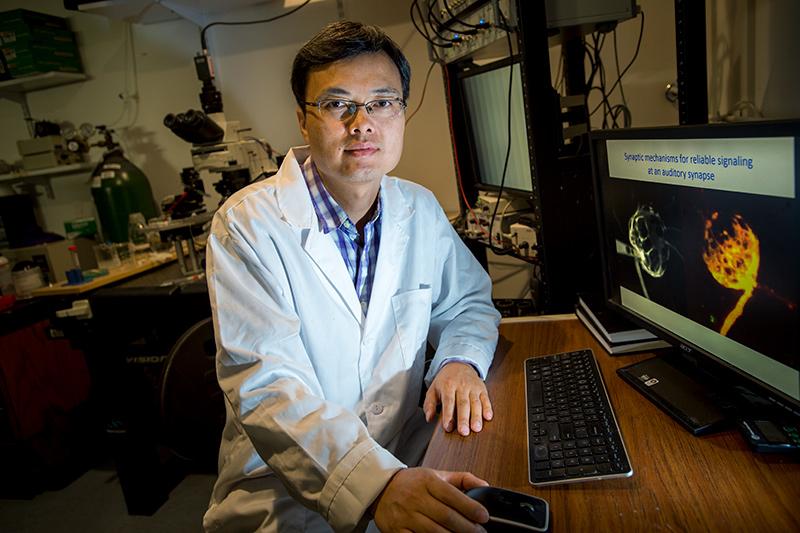New Tulane study explores root causes of hearing loss
A Tulane University researcher has been awarded a $1.8 million grant to develop a better understanding of healthy human hearing and lay the groundwork for future treatment of hearing disorders.
The five-year grant from the National Institute on Deafness and Other Communication Disorders (NIDCD) will allow Hai Huang, assistant professor of cell and molecular biology, to study how auditory signals are processed with normal hearing and altered during hearing loss.
Hearing loss affects more than 40 million Americans, Huang says, and growing evidence shows that noise exposure and hearing loss induce profound changes in the central auditory system from the brainstem to the cortex.
"We hope this work will provide the basic groundwork for future strategies for the treatment of hearing disorders."
Hai Huang, assistant professor of cell and molecular biology at Tulane
Huang and his team will use hearing-impaired and normal-hearing mice to study auditory information processing at the synapse level. Synapse is a junction between two nerve cells, consisting of a pre-synaptic component that releases the neurotransmitter and postsynaptic component that detects the neurotransmitter.
Previous research from other labs has primarily focused on the postsynaptic site, but not on the presynaptic mechanisms because typically the presynaptic terminals are too small to make recordings. Huang’s research in the so-called calyx of Held synapse, an especially large synapse, will allow for direct recordings at the presynaptic terminal, using a combination of challenging but powerful approaches to study the mechanisms of auditory signaling in mice.
“The presynaptic change is poorly understood,” Huang said. “We will test how hearing loss affects vesicle loading, release and recycling. The project aims to understand the synaptic mechanisms that support the highly reliable synaptic transmission at auditory synapses at normal hearing and during hearing loss.”
“We hope this work will provide the basic groundwork for future strategies for the treatment of hearing disorders,” Huang said.

